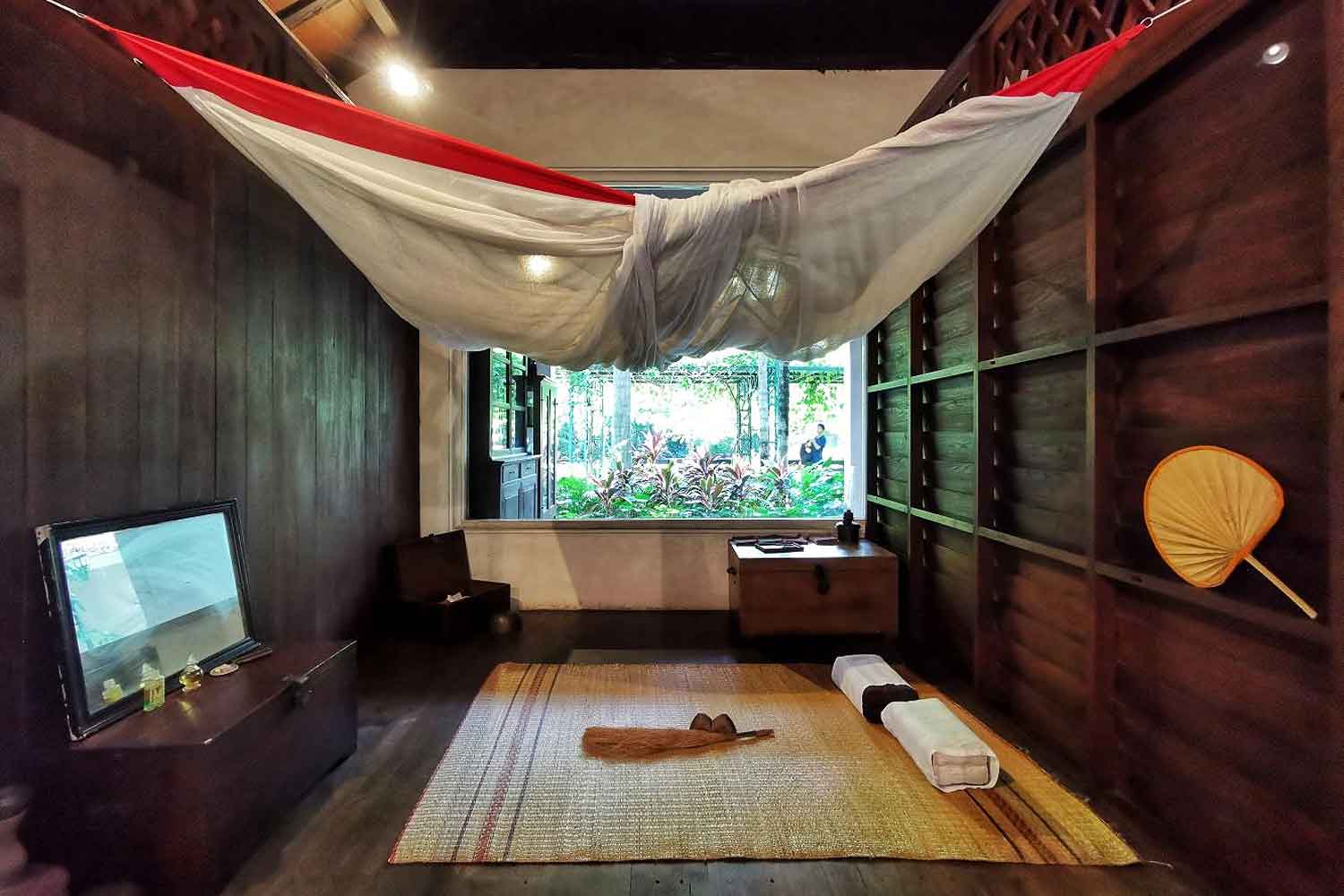
An oasis of greenery and serenity, the Princess Mother Memorial Park is located in an old neighbourhood between Wat Anong and the Chao Phraya River. Apart from large shade trees and many native plants, the 4 rai site, which was donated by the late businessman/politician Lek Nana, also has a replica of the modest childhood home of Princess Srinagarindra, a museum dedicated to the princess' life and work and the history of this part of Klong San, and ruins of workers' accommodation that date back to the early Rattanakosin Period. Throughout the months of November and December, every Sunday from 4pm on, veteran singers such as Srisalai Suchatwut, Ruangthong Thonglanthom, Rungruedi Phaengphongsai and Jittima Juajai will take turns to entertain parkgoers with their hits.
Across the Chao Phraya River from Chinatown are old neighbourhoods steeped in history. Over a hundred years ago, one of them was the home and playground of a goldsmith's daughter who decades later become the mother of two beloved monarchs. But the late Princess Srinagarindra was not the only historical figure who once called this area home.
Not so far from the Princess Mother Memorial Park, which is dedicated to Princess Srinagarindra, sits Wat Anongkharam where she used to study. The temple was built during the reign of King Rama III by Thanphuying Noi, wife of then-Phraya Si Phiphat Ratchakosa (Tat Bunnag) who ordered a major renovation of another temple nearby now known as Wat Pichaiyat, or officially Wat Pichaya Yatikaram.
During the following reign, Phraya Si Phiphat Ratchakosa was promoted to become Somdet Chao Phraya Borom Maha Pichaiyat, overseeing the capital as well as overseas trade. He was one of the only four persons in history to attain the Somdet Chao Phraya rank. This explains why the road that cuts through these areas, as well as the canal running side by side with it bear the name Somdet Chao Phraya. The Chao Phraya River, however, has nothing to do with this. The name has been used since the Ayutthaya Period.
Back to Princess Mother Memorial Park, the area next to it used to house a community of Muslims from Pattani and India, among them were the forefather of the Nana family, which donated the land for the park. Near the park's entrance there is a big arched gate bearing the initials RBMCO, which stands for Randery Braramakran Company. It's the real estate business of the Nana family, which was established in 1913. Some of those Muslim immigrants were craftsmen who work with gold hence the lane they lived in is called Soi Chang Nak (goldsmith lane).
But, of course, this part of Klong San also was home to Thai and Chinese people. Apart from the mentioned temples, there are still a few more, each with interesting history and architectural art. Among them are Wat Thong Nopphakhun and Wat Thong Thammachat.
In the past, the communities were linked by small criss-crossing waterways, which is why the area is called Klong San, which means woven canals. These days, they are connected by small roads and alleyways that make it convenient to explore on foot.
Many residents are newcomers but there are also those who never left. During one of my visits, I met an old man who told me about the people's reaction during the Manhattan Rebellion in 1951 against Field Marshal Plaek Pibunsongkhram who was the prime minister at that time. He recalled that he was very young and the sounds of gunfights from the Memorial Bridge were loud and frightening. On the latest trip to the area, a man who was collecting fallen tree branches told me about a beautiful Chinese mansion nearby. I followed the directions he provided, found the place but only took pictures of its intricately embellished gable from outside.
Like other old parts of Bangkok, the more I visit this side of Klong San, the more I learn about the Thai society and history. The area is safe and easy to get to. Who knows, you might find it one of your favourite places too.
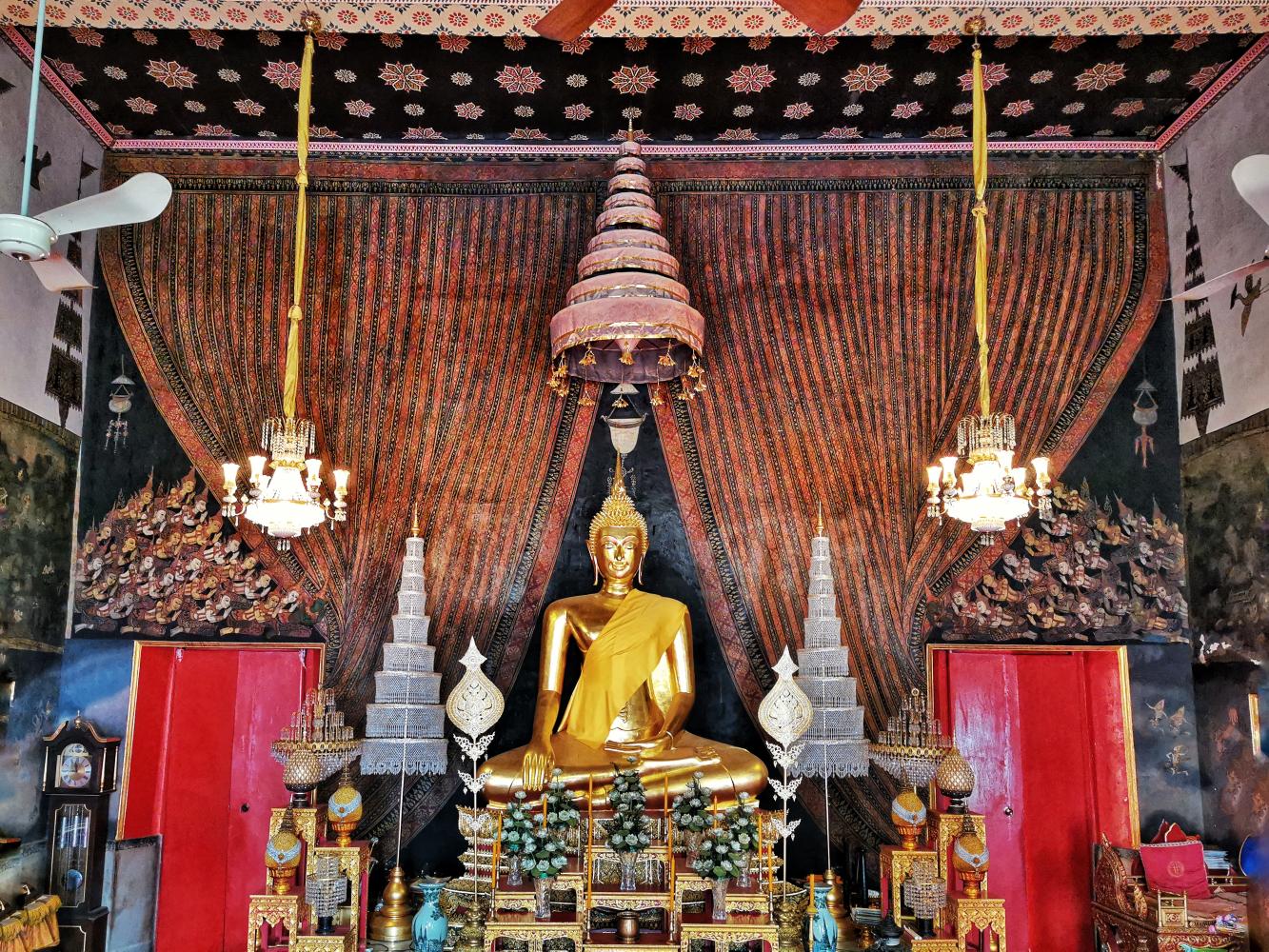
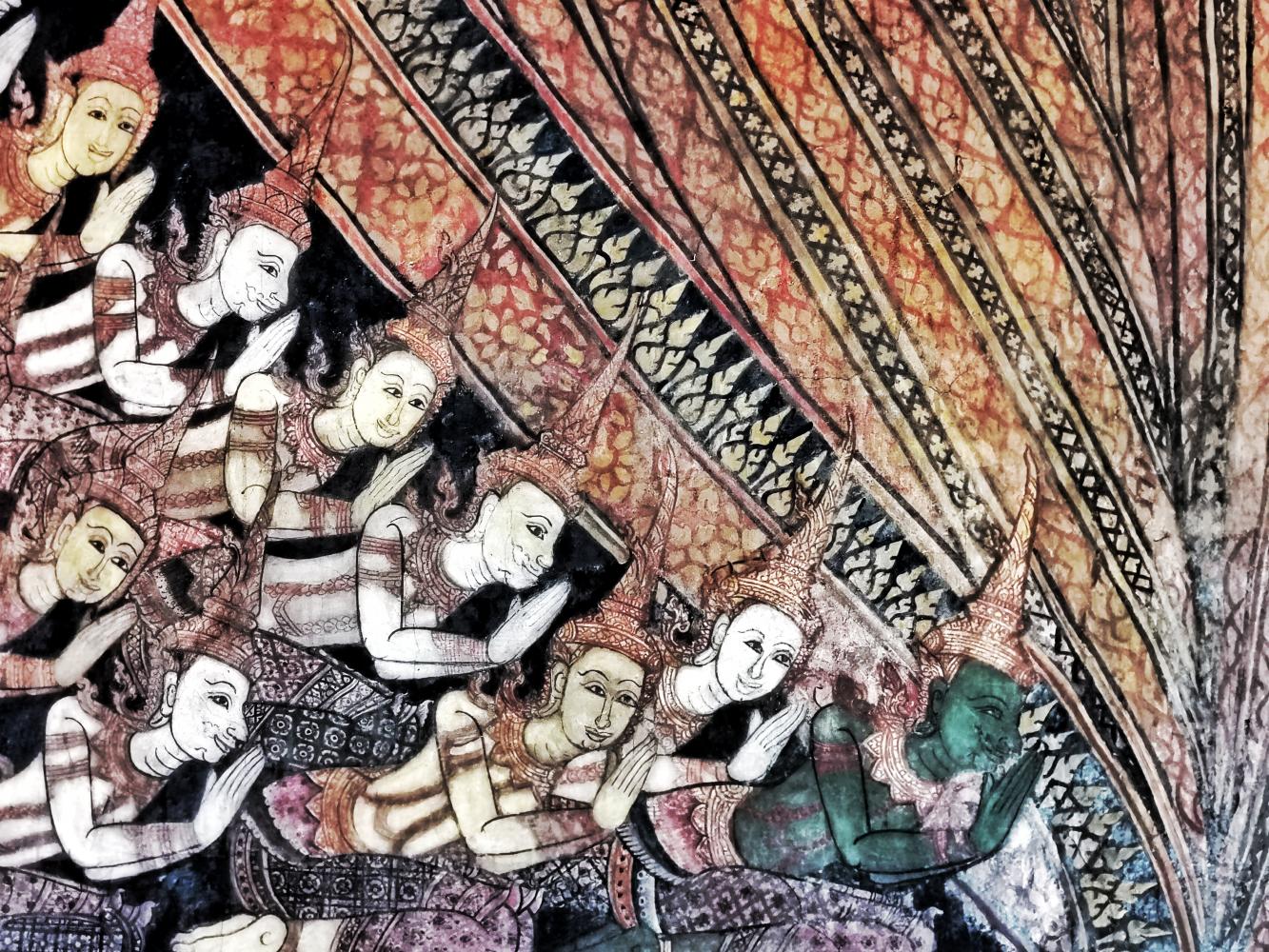
This section of Klong San district boasts a number of elegant temples. Wat Thong Nopphakhun stands out from the others, thanks to its ordination hall, which features not only doors and windows with unique designs but also one-of-a-kind murals in its interior. The wall behind the principal Buddha image, for example, sports a picture unconventional for a Thai temple. There is a set of beautiful, partially open, curtains painted on it. At first glance, some visitors don't even realise that's not real cloth. The hall is normally closed, except during the morning and evening prayer sessions (tham wat chao and tham wat yen). Tomorrow, it will be open most of the day as the temple will be celebrating the royal kathin ceremony.
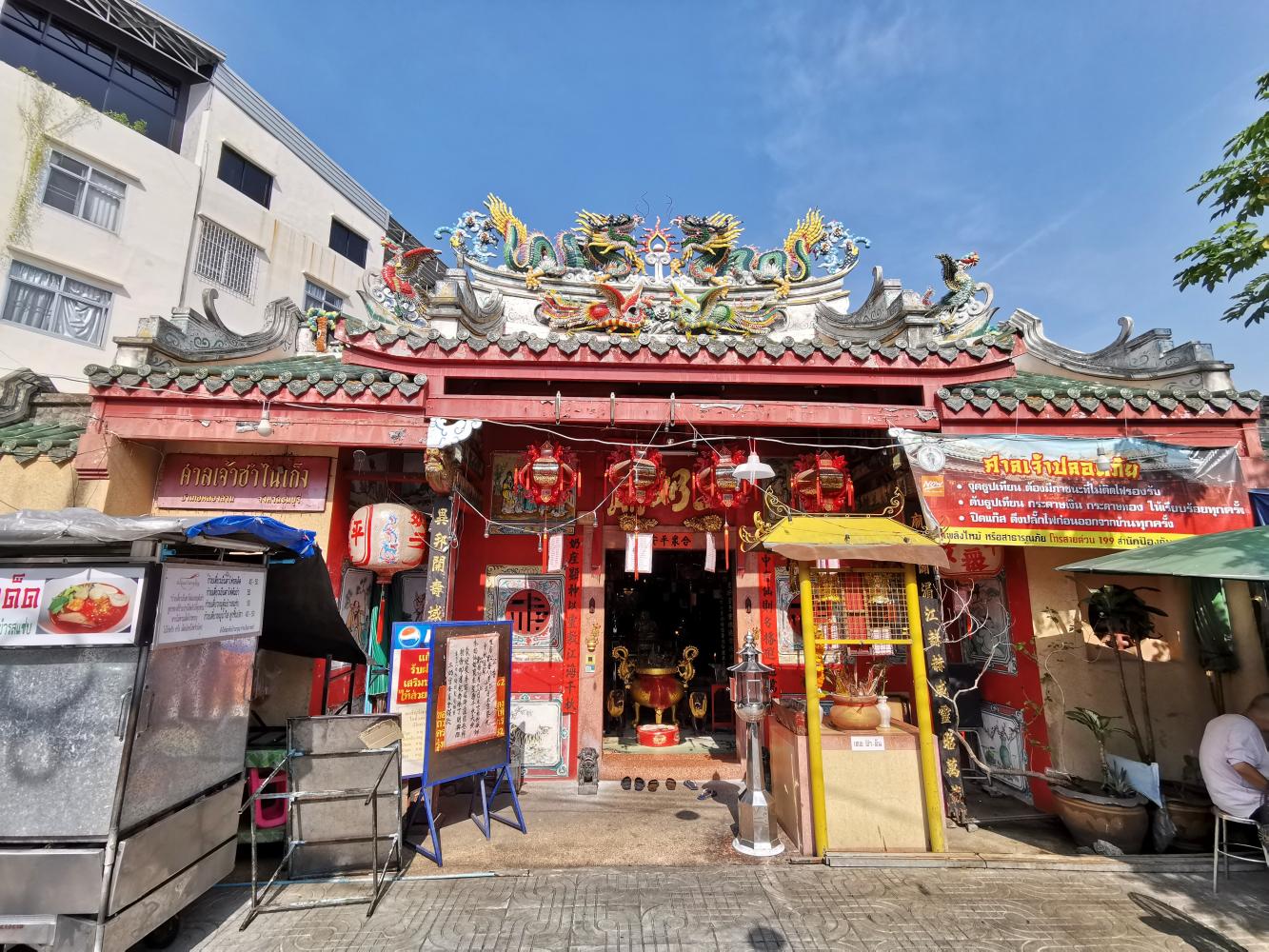
In the area between Wat Anong to the west and Wat Thong Nopphakhun to the east, there are Chinese shrines of various sizes, some so small and hidden you might walk pass without even noticing. This Sam Nai Keng Shrine is located right on Tha Din Daeng road. It dates back to 1847.
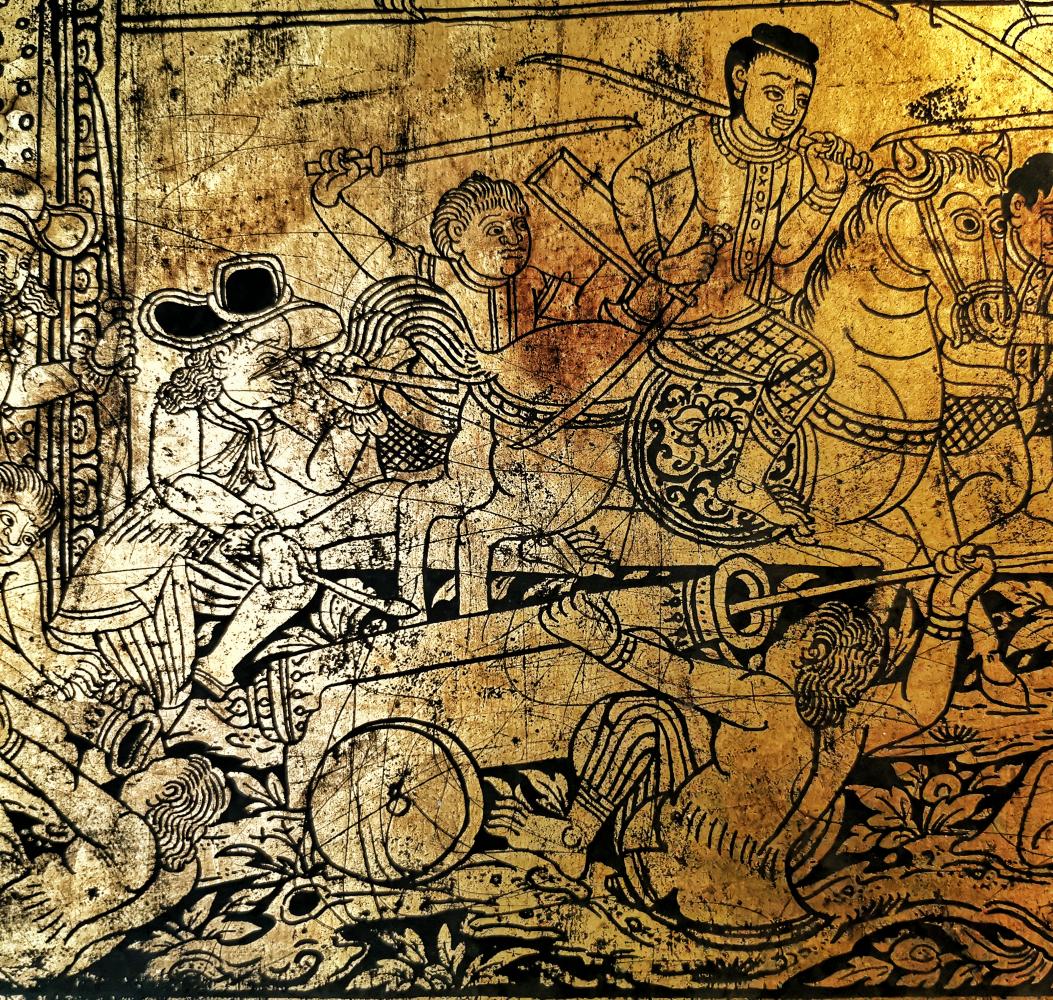
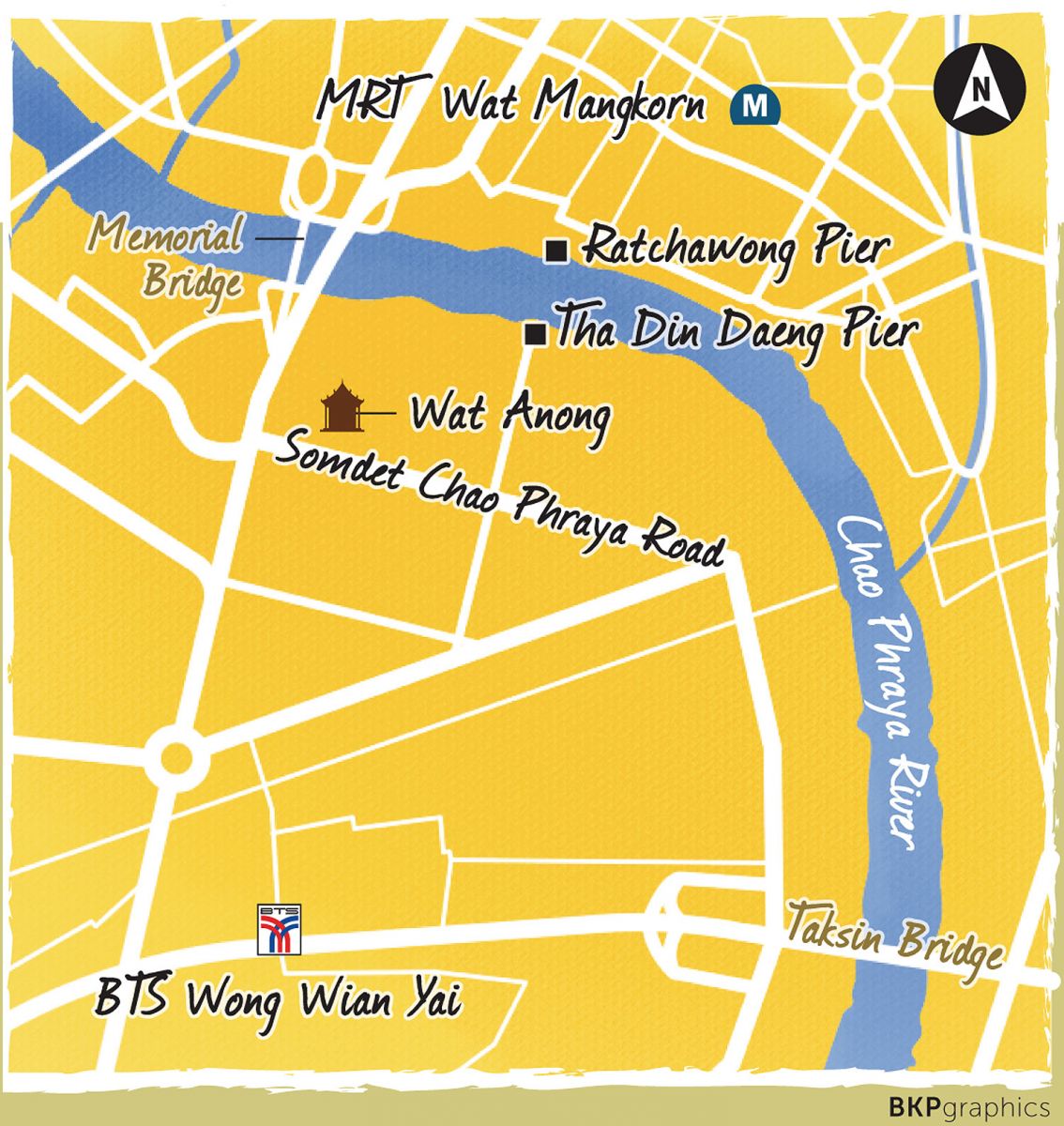
There are many ways to get to this part of Bangkok on the west side of the Chao Phraya River. The nearest BTS station is Wong Wian Yai. From there, if you don't want to walk, you can hail any kind of taxis.
In case you prefer the MRT, you can get off at Wat Mangkorn station and find your way through the Chinatown to Rat Chawong pier (a stop of the Chao Phraya Express boats) where you can take a ferry across the river to Tha Din Daeng.
If you drive, you can either find a spot to park on Tha Din Daeng Road or in the parking lots of Buddhist temples in the area.